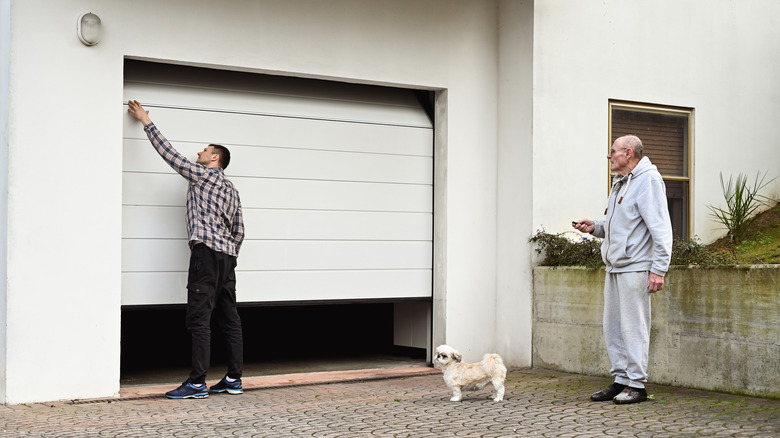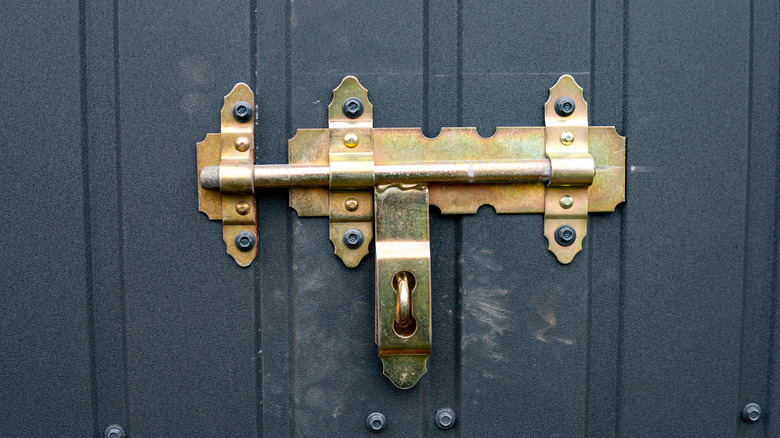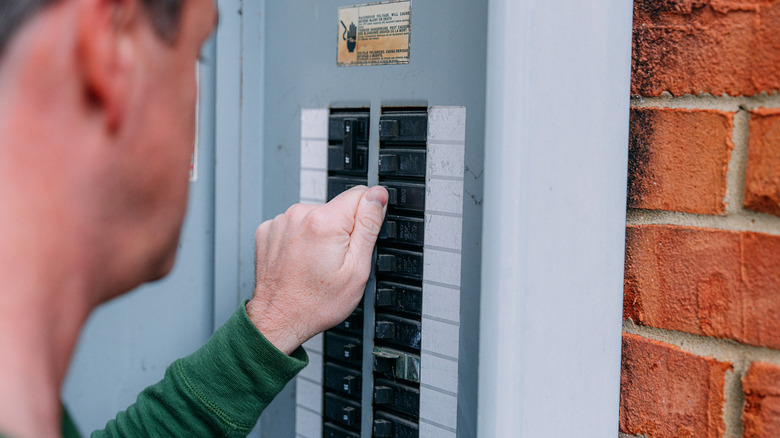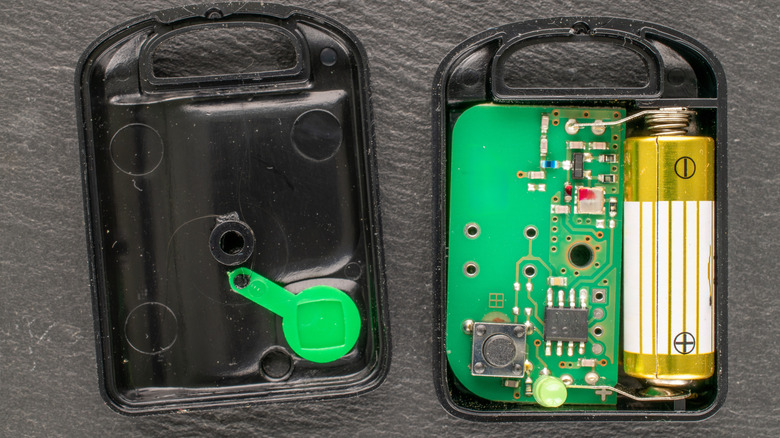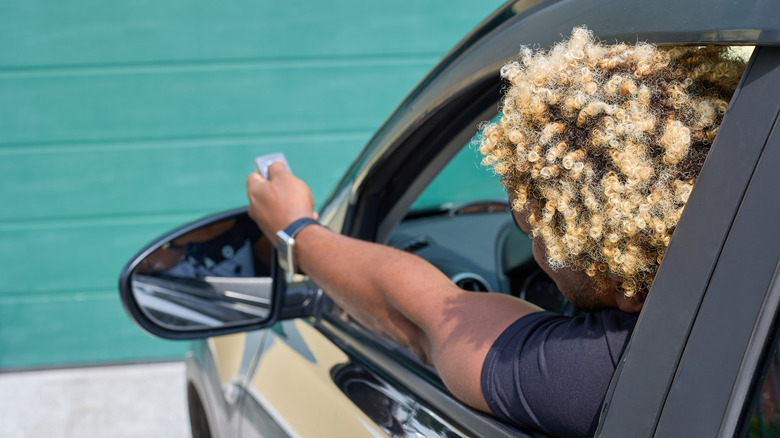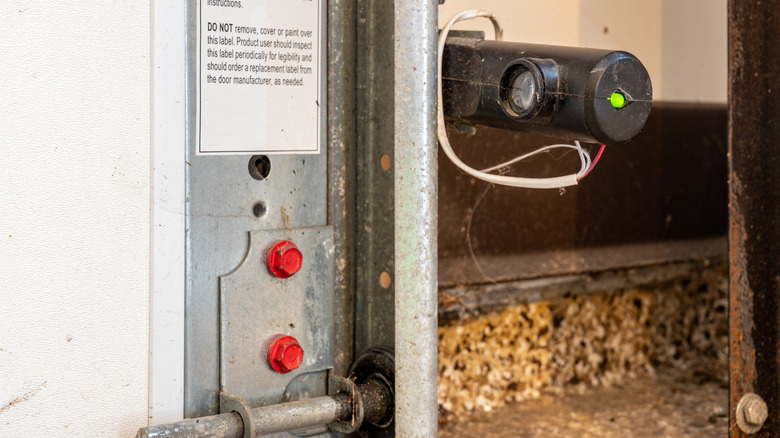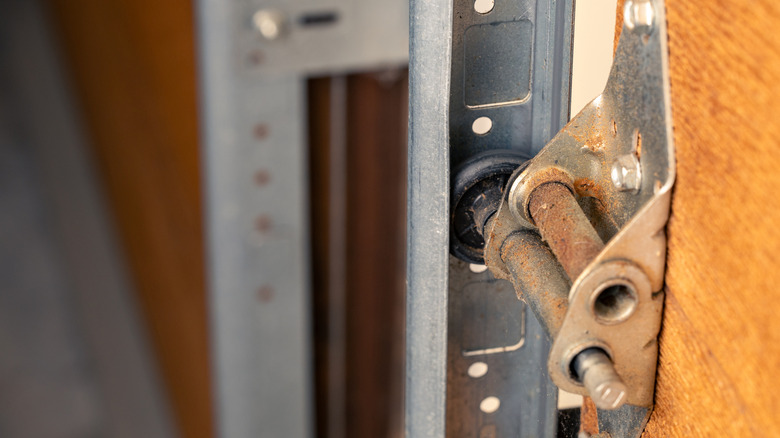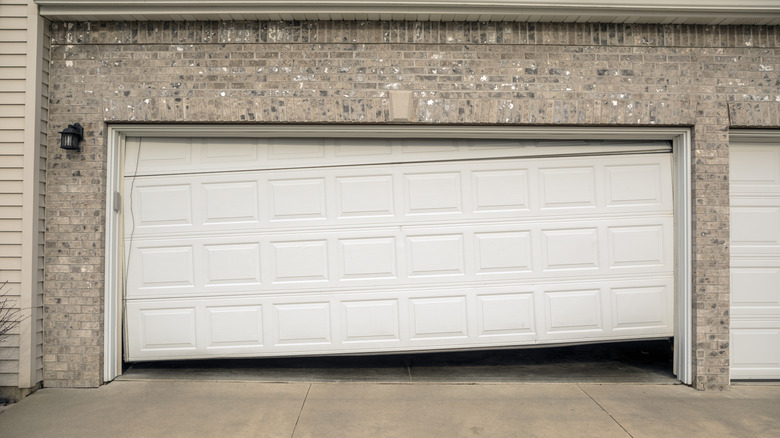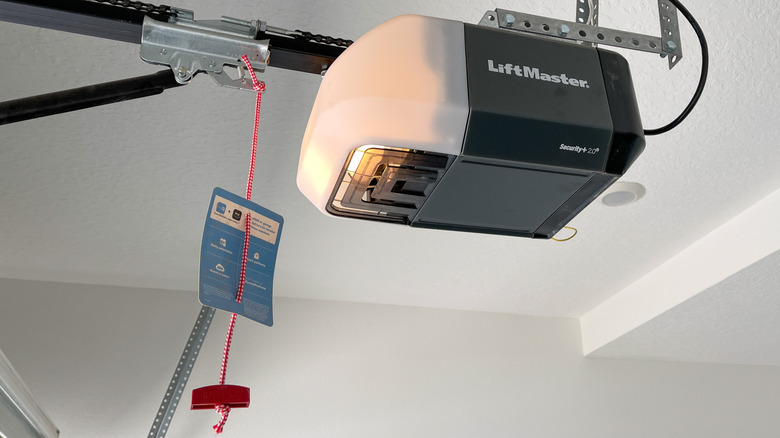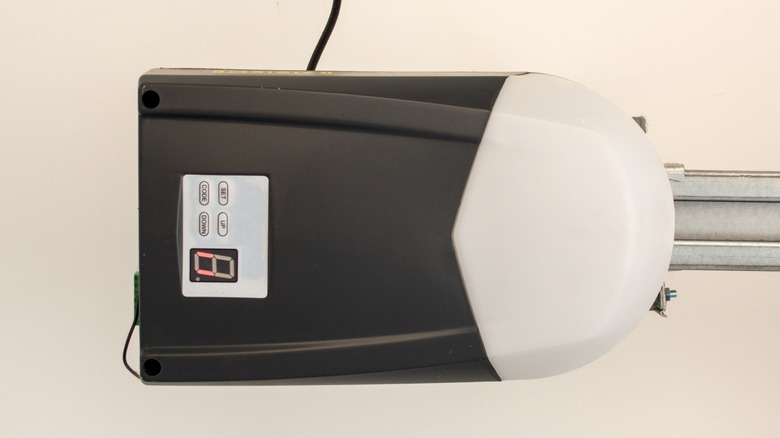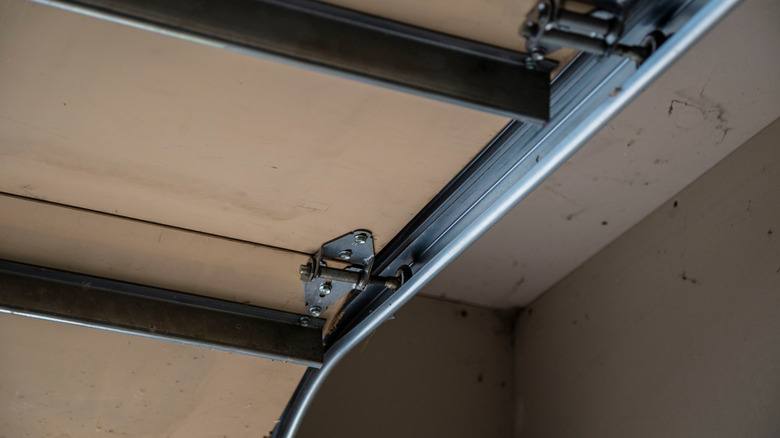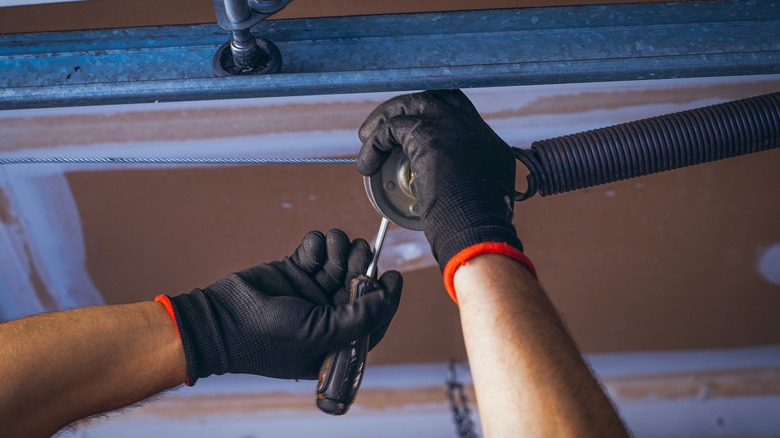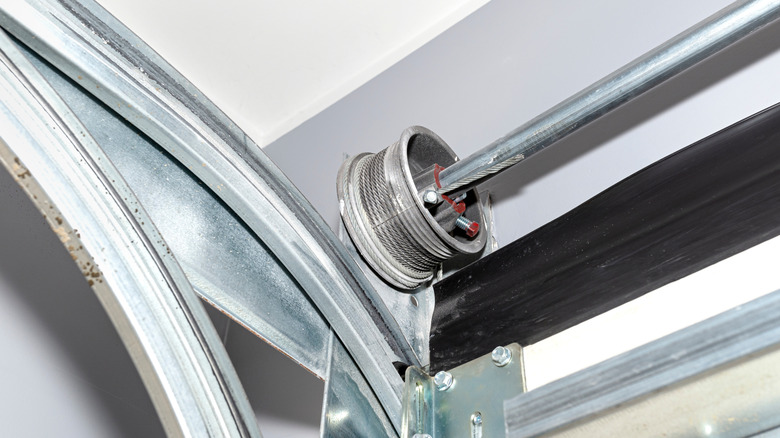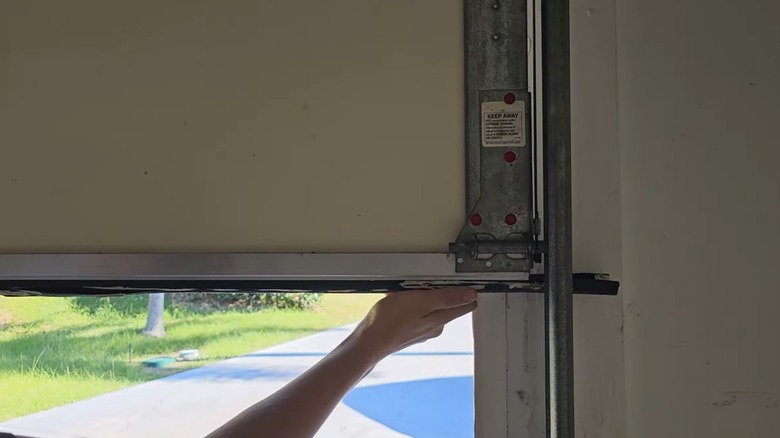13 Reasons Your Garage Won't Open (And How To Fix It)
Few things are more frustrating than pressing your garage door remote and ... nothing. Whether it's refusing to budge, halting halfway, or making unsettling noises, a malfunctioning garage door can grind your day to a halt. Modern garage doors are complex systems that rely on multiple interconnected components to function smoothly. When even one part fails, the entire system can stop responding. While it may seem like a mystery, the problem usually comes down to a mechanical fault, an electrical disruption, or poor maintenance. So, before you give up and start searching for a new style of garage door, thoroughly survey your system for any malfunctions.
Before calling a technician, take a systematic approach to troubleshooting. Start with checking the basics, such as power supply, remote batteries, and physical obstructions. More intricate checks involve looking at sensor alignment, track balance, and spring tension. Before doing these intricate checks, it's advisable to consult with a garage door maintenance professional, as they can be dangerous without proper know-how. Understanding the potential culprits keeping your garage from opening can also help you estimate how much the garage door repair will cost you or if it's an easy fix.
The door is locked, or the lock button is engaged
One of the simplest reasons a garage door won't open is that it's locked. Many garage doors have manual locks or slide bolts that physically secure the door from the inside. When these are engaged, the opener's motor will strain, but the door itself won't move. Similarly, modern systems often feature a lock or vacation button on the control panel. This function disables remote access for security purposes while you're away. If accidentally pressed, it can mimic the symptoms of a malfunctioning opener by preventing wireless commands from reaching the motor.
To fix this, you have to check your garage door from the inside to ensure no manual locking bars, deadbolts, or side latches are engaged. Then, inspect the wall control panel. If you see a lock icon or light illuminated, pressing and holding the "lock" button will typically deactivate it. Once done, test your remote or keypad again. If the door opens normally, you've solved the issue.
A disruption with the power source can prevent opening
If your garage door won't respond at all, there's no motor sound, no light flicker, and no movement, a power disruption may be to blame. The most common culprit is a disconnected or unplugged opener or motor unit. In other cases, the power issue might be a tripped circuit breaker, blown fuse, or even a faulty outlet. Since the opener relies on consistent current to power its lifting mechanism, any break in the flow means the door remains locked in place.
Start troubleshooting by confirming that the garage door opener is properly plugged in. Next, check your home's electrical panel to ensure the circuit that powers the garage hasn't tripped. Reset the breaker if necessary. Also check your fuse box to confirm the fuse hasn't blown. If the outlet itself isn't delivering power, test it with another device like a lamp or charger to confirm it's still functional. If it's not, switch it out. Should none of these quick fixes work, you might be dealing with more serious issues that require a professional's expert attention, like a motor with damaged internal components.
There might be battery or programming issues
When your garage door refuses to respond to remote commands, the problem could be as simple as dead or expired batteries in the remote or transmitter. Most garage door remotes use small button cell batteriesthat last about a year, but cold weather can shorten their lifespan. In some cases, though, the issue isn't the power source; it's the programming. Power outages, electrical surges, or even dropping the remote can cause the internal connection between the remote and opener to desynchronize, meaning the signal no longer reaches the motor unit.
Begin troubleshooting by replacing the remote batteries and testing whether the door responds. If the issue persists, reprogram your remote following the manufacturer's directions, then press the remote button to sync it again. If reprogramming fails, you may need to reset the entire opener unit and pair all remotes from scratch. While programming issues are one of the common garage door opener problems, it shouldn't be stressful to fix if you follow proper guidance.
There's an interference with the remote signal
If your garage door opener isn't responding, signal interference could also be the reason. Most garage door remotes operate on frequencies around 300 to 400 MHz, and anything disrupting that frequency, such as specific lighting systems, wireless routers, or nearby electronic devices, can block or weaken the signal. Another common cause is a bent or dirty antenna on the garage door opener motor. When the antenna isn't properly extended or aligned, the receiver struggles to capture the remote's signal. Distance also plays a role. If you're trying to open the door from too far away, the signal might not reach the receiver effectively.
Start by inspecting the opener's antenna, making sure it's straight and fully extended. If the problem persists, unplug or relocate devices within the area that may emit overlapping frequencies. Try operating the remote closer to the garage door to confirm whether range is the issue. If none of these fixes work, consider reprogramming the remote.
The photo eye sensors are misaligned or dirty
Modern garage doors use photo eye sensors, which are small infrared devices located near the base of the door tracks. These sensors work by transmitting an invisible beam across the door's opening. If anything interrupts or blocks that beam, the system stops the door from operating to avoid accidents. However, even minor issues like dust buildup, cobwebs, or slight misalignment can trick the system into thinking there's an obstruction. When that happens, the opener interprets the broken beam as a blockage, keeping the door from closing or sometimes, from opening at all if the safety cycle is interrupted.
First, inspect both sensors. Wipe the lenses gently to remove dirt, debris, or residue. Then, check alignment. The LED light on the receiver should be shining a solid green if aligned properly. If it isn't, slightly adjust or tighten until both sensors face each other directly. Also, make sure no object, like a broom, storage bin, or vehicle bumper, is blocking the beam.
Garage door rollers are damaged or non-lubricated
Garage door rollers are the small wheels that glide along the metal tracks, allowing the door to lift and lower smoothly. Over time, these rollers can dry out, accumulate dirt, or wear down, especially in colder temperatures when metal contracts and lubrication thickens. When that happens, the rollers can vibrate or even pop off their track, causing the opener to strain during usage. In severe cases, the door may refuse to open entirely because the rollers are jammed or broken. This issue not only disrupts operation but can also cause uneven movement and is one of the clear signs your garage door rollers need to be replaced.
To fix this, pinpoint any stiff or grinding rollers. Before touching the rollers, unplug the garage door opener for safety, then wipe each roller clean with a rag to remove grime and apply a silicone-based lubricant. Rotate the rollers while applying to ensure full coverage. Consider adding this chore to your outdoor home maintenance list to prevent a recurrence. If a roller grinds, cracks, or wobbles, it's time to bring in a professional to replace it. Nylon rollers are typically a better, longer-lasting upgrade over steel.
An out-of-track garage door will not open
When a garage door comes off its track, it immediately loses the alignment necessary for smooth movement. You'll typically notice the door opening halfway before jolting to a stop or hanging unevenly on one side. This can happen when a roller slips out due to impact, like accidentally bumping the door with a car, or from long-term wear that loosens track bolts and brackets. An out-of-track door is both inconvenient and a safety hazard. The door's weight can shift unpredictably, which could cause the system to seize entirely or even lead to the door collapsing.
If the door refuses to open and you're locked out, use the emergency release cord, usually a red handle hanging from the opener rail, to disengage the opener so you can lift the door manually. Once inside, inspect both tracks to locate the problem area. If a roller has merely slipped out, you can loosen the track screws, guide the roller back in, and then retighten the bolts. This can be done safely if the door is fully open and secured, but working with garage door springs can be unpredictable. It may be best to call a professional technician, especially if the track is bent or warped.
Forgetting to reconnect the door to the track will prevent it from opening
When you pull the emergency release cord, it disengages the garage door from the opener's trolley, allowing you to lift or lower the door manually. However, after finishing maintenance or power restoration, not reconnecting that mechanism is one important maintenance step you're forgetting on your garage door. This is a common oversight after fixing minor issues like power outages, obstructions, or cleaning sensors. You might hear the motor running, but the door stays firmly in place because the trolley isn't locked into the release latch.
To fix it, start by ensuring the garage door is fully closed, which reduces tension on the system. Then, grab the red emergency cord and pull it toward the motor unit or away from the door until you hear or feel a click. This re-engages the trolley with the opener carriage. Once reconnected, press the wall button or use your remote to operate the door. It should now open and close automatically again.
Up-limit switch issues can cause the door to open partially
The up-limit switch is a small but crucial component that controls how far your garage door travels before stopping when opening. If the switch is set too close to or far from the motor unit or misaligned, the opener may assume the door has reached its full open position prematurely, causing it to stop halfway, or the door opener may keep running. This malfunction can make the system behave as though the door has hit an obstruction, even when it hasn't. Additionally, extreme temperature changes can sometimes cause the metal components to expand or contract, subtly shifting the switch out of its ideal range.
To fix this, first unplug the opener. Then, locate the up-limit switch on the opener track near the motor unit. Using a screwdriver, turn the adjustment screw in small increments; usually, a full turn clockwise increases the door's travel distance. Test the door after each adjustment until it opens fully without reversing or stalling, and be careful to stay clear of the door at all times. Avoid over-adjusting, as this could cause the door to hit the stops or strain and cause damage. If your opener uses electronic limit settings instead of a physical screw, the up-limit switch would likely be on the motor. You'll need to consult your model's manual for the adjustment process. Don't hesitate to bring in a professional when an issue becomes to complicated or if there are any safety concerns.
The overhead tracks are misaligned, bent, or obstructed
The overhead tracks guide the door's rollers as it opens and closes. When these tracks are aligned wrongly, the rollers encounter resistance, which can prevent smooth operation. The opener's safety sensors detect this strain and may automatically stop or reverse the door to avoid further damage. Even slight misalignments can cause grinding noises, jerky movement, or a door that hangs unevenly when halfway open. Common causes include accumulated dirt or potential impact from a heavy object that has knocked the tracks out of alignment.
Start by visually inspecting both tracks from top to bottom. Turn the opener off by unplugging it. If you can safely remove any visible debris, cobwebs, or foreign objects, do this carefully. Check for straightness. If the track appears slightly bent, call a professional. They can tap it back into place with a soft mallet and spirit level, then tighten it to avoid further distortion. If you notice that the misalignment is severe, such as a pronounced bend or visible gap between the track and roller, avoid forcing the door and call a garage door technician right away.
If the torsion or extension springs need adjustments or are broken
The torsion and extension springs are the muscles behind your garage door's movement, counterbalancing its weight to make lifting smooth and nearly effortless. When one of these springs breaks or loses tension, the motor ends up trying to lift the entire door's weight without support, something it's not designed to do. This not only prevents the door from opening properly but also risks burning out the opener motor or snapping additional components. A broken spring can often be identified by a loud bang and feels unusually heavy when you try to open it manually.
Because these springs are wound under extreme tension, attempting to repair or adjust them yourself can be extremely dangerous. If you suspect a spring issue, stop using the garage door immediately to prevent further damage and to avoid risk. Instead, contact a licensed garage door professional who has the correct tools to safely unwind and replace the damaged springs. For prevention, have your system inspected annually to ensure proper balance and tension, especially before seasonal temperature changes that can affect metal components.
A snapped garage door cable is a major hazard, too
Garage door cables work hand-in-hand with the springs to lift and lower the door smoothly by distributing its heavy weight evenly. When a cable snaps, this balance is instantly lost, causing the door to lift unevenly, or in severe cases, open then crash down suddenly. This creates a serious safety hazard, as the door's full weight can cause severe injury or damage. You might notice frayed strands, slack tension, or one side of the door hanging lower than the other; these are clear signs that a cable has broken or is on the verge of doing so. Continuing to operate the opener under these conditions can further damage the springs.
If you suspect a snapped or loose cable, do not attempt to open or close the door, whether manually or with the opener. Disconnect the power supply and use a vice grip or locking pliers on the tracks to prevent the door from moving unexpectedly. Then, contact a qualified garage door technician immediately, as replacing or rewinding cables requires specialized tools and expertise to handle the extreme tension safely. To avoid recurrence, have cables inspected annually for fraying, corrosion, or uneven tension, and replace them in pairs for balanced performance.
A sliding door bottom seal can cause the door not to open
Sometimes, the bottom seal of your garage door, the flexible rubber strip designed to block out dirt, pests, and drafts, can slide out of place. When that happens, it might bunch up and hit the track brackets along the sides of the door. Even a small misalignment in installation can stop the door from opening fully, as the seal creates friction or gets physically jammed against the metal track. A misaligned bottom seal can also lead to mishaps such as debris, pests, or water coming into the garage.
To fix this, start by disconnecting the garage door opener so you can safely inspect the seal. If it's simply shifted, slide the seal back into its proper position along the retainer groove, ensuring it's flat and evenly aligned across the bottom of the door. You can also secure it with a few small screws or adhesive if it tends to move frequently. If the seal is old, hardened, or cracked, it's best to replace it altogether. New seals are easy to get and easy to install. Once everything's secure, manually open and close the door to confirm it moves freely before reactivating the opener.
